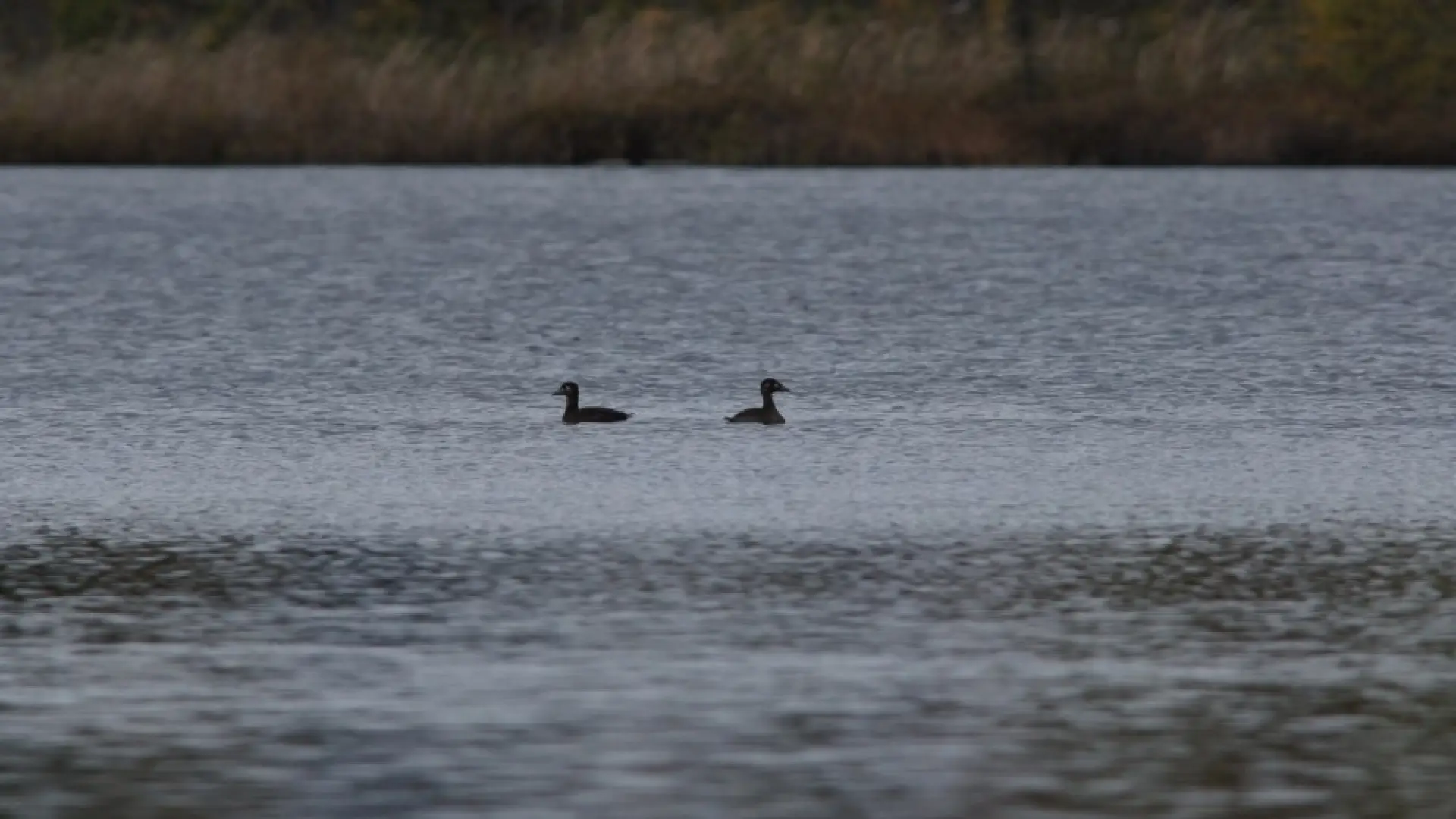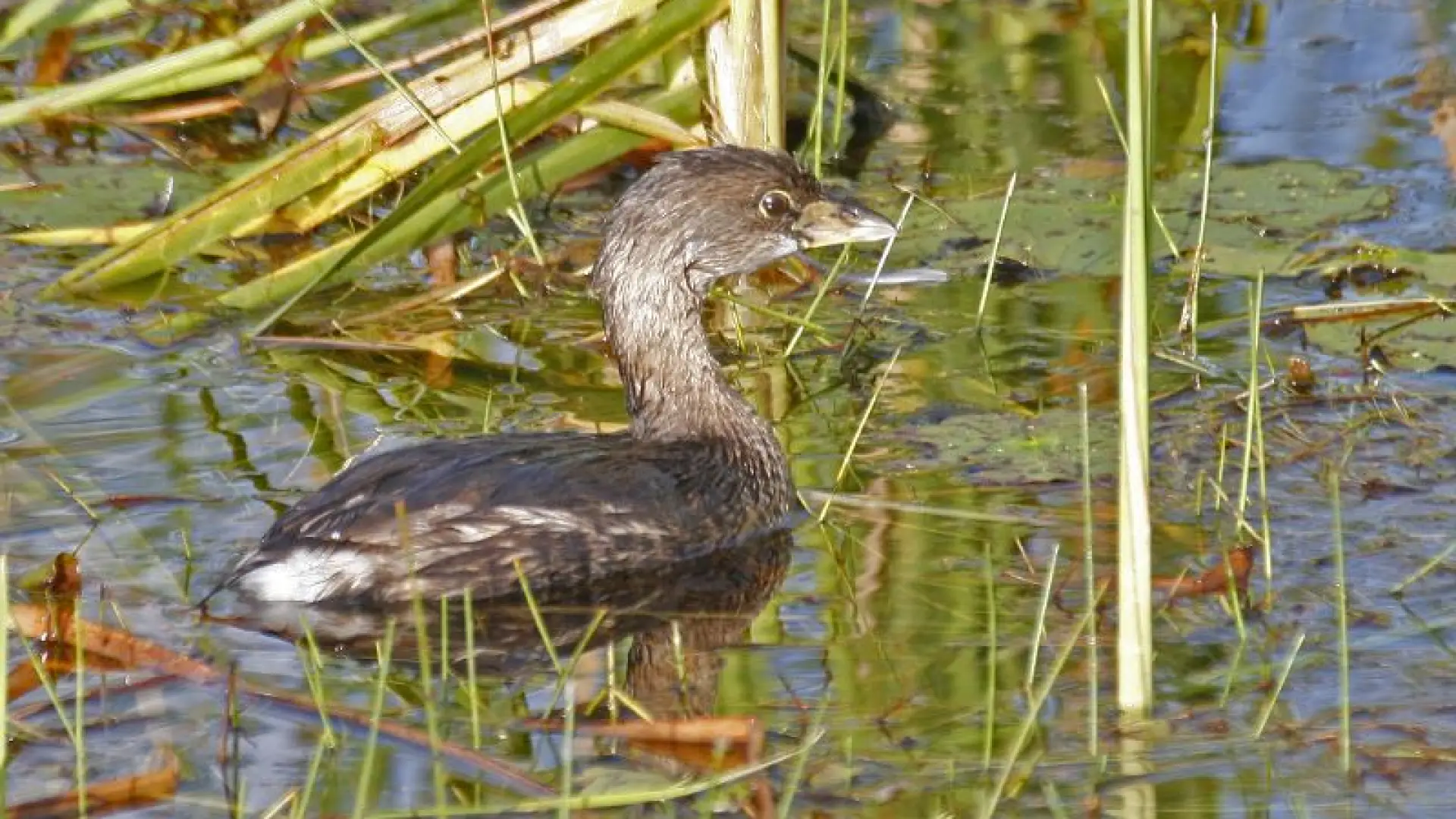
Fall can be a rainy time in the Adirondacks. Cool, cloudy days can be quite wet and raw. We've recently had our share of fall rain, and as our recent cold fronts have ushered us cooler temperatures, they have also brought us ducks. Migratory birds regularly use cold fronts to help them save energy as they head south, and many of our songbirds have already moved through. However, we are now reaching the time of year when ducks and other waterfowl begin to move south and toward the coast for the winter.
Some, like the soon-to-be-arriving snow geese will generally fly high overhead, noting their presence only by their distant honking and white wings against the sky. Other species, however, will rest and feed briefly on Adirondack lakes and ponds before moving on. Some individuals will only rest for a few hours. Others, however, will remain for several days. So it is a great time to keep your eyes open and see what may be stopping through.

One of my favorite places to check is Lake Colby in Saranac Lake. Accessed along the railroad tracks (a popular spot with fishermen), the backside of the lake (the opposite side of the lake from the Adirondack Medical Center) seems to be a favorite among migrating waterfowl. Often called Old Lake Colby, this area offers picturesque views of the lake and surrounding hills, and there, sometimes tucked in along the small bog mat and cattails are ducks.
I went to Lake Colby for the first time this fall last week. And to my surprise I found nine surf scoters – a diving duck which as their name suggests is much easier to find along the coast. The scoters stayed about a week, and were joined one day by a black scoter. The latter bird didn't linger long. Lake Colby has also had a few common mergansers, a common Adirondack breeder, as well as wood ducks, ring-necked ducks, and a few mallards too. There have also been at least four pied-billed grebes along the backside of the lake. Grebes are not technically waterfowl – they actually make up their own order of birds – Podicipediformes – but they are waterbirds that dive for their food and behave similarly to ducks. Grebes nests in marshes across the region, but these birds were clearly migrants. The lake also still holds its common loons (also not technically waterfowl) which will linger a while longer before heading south.

Soon more species will arrive from the north, joining the list of ducks stopping through area lakes. Species like common goldeneye, bufflehead, and both greater and lesser scaup (you can't beat the names of ducks) will all be passing through. So be on the lookout for ducks as the fall continues. You never know what you might find.